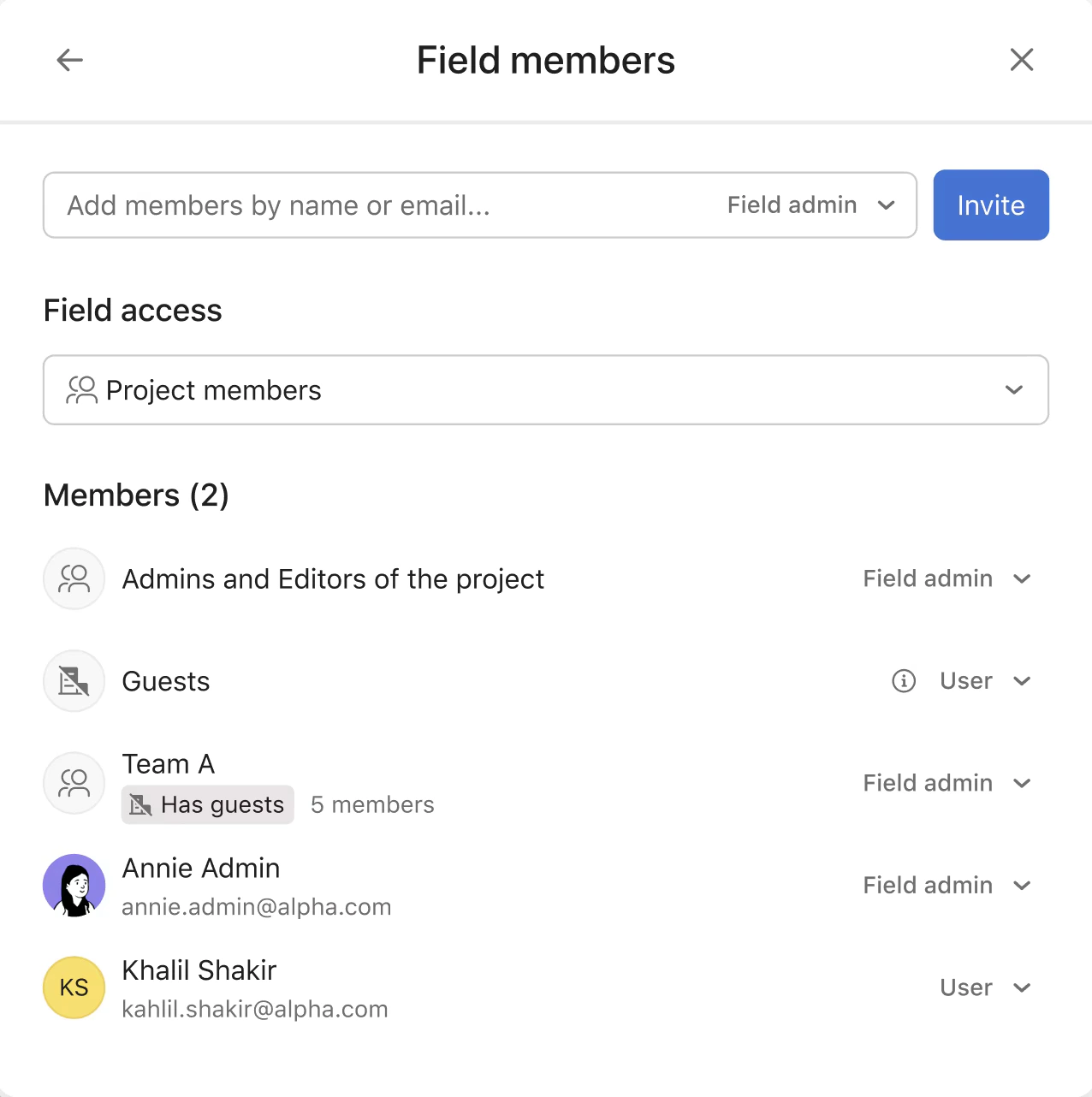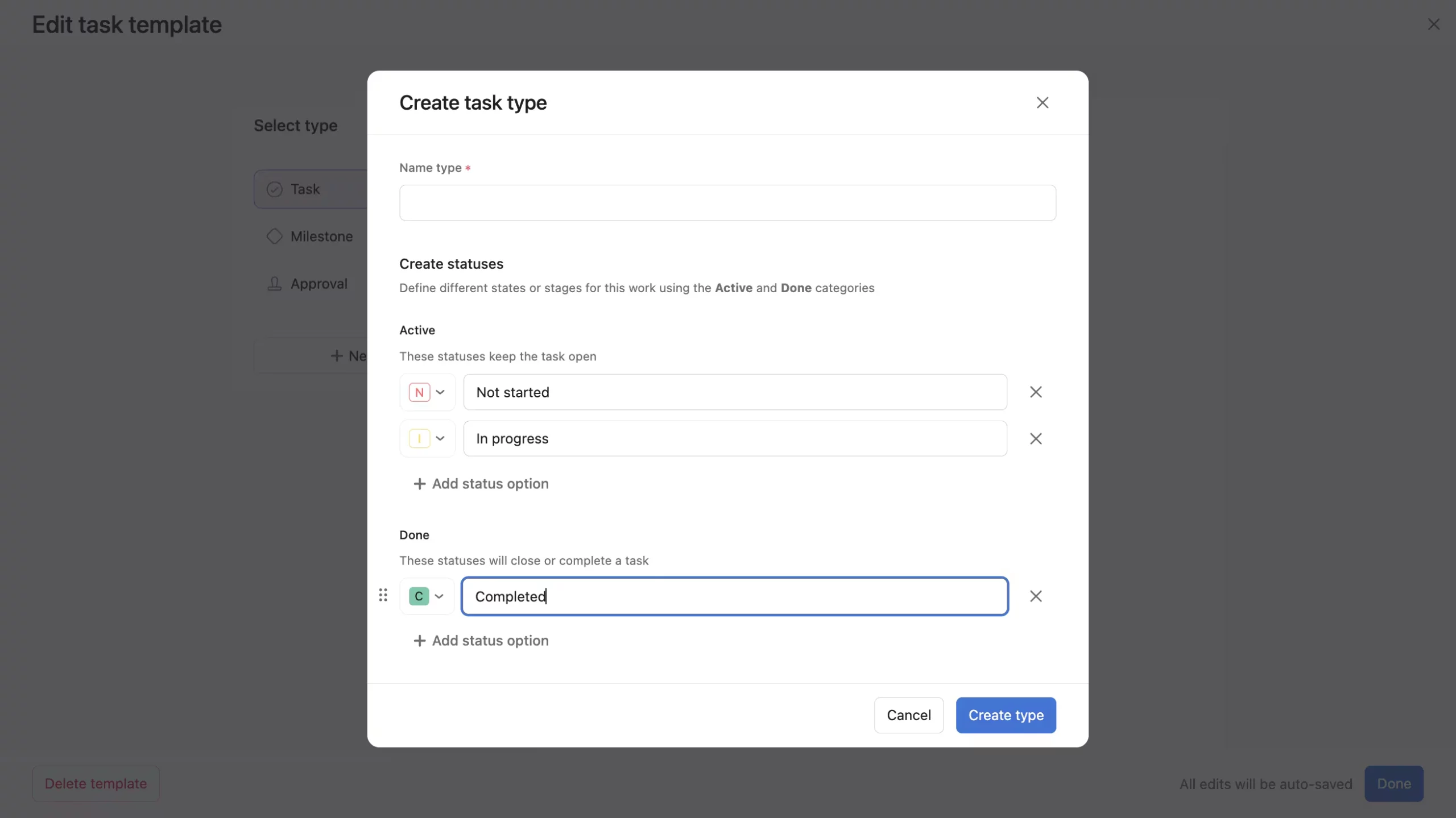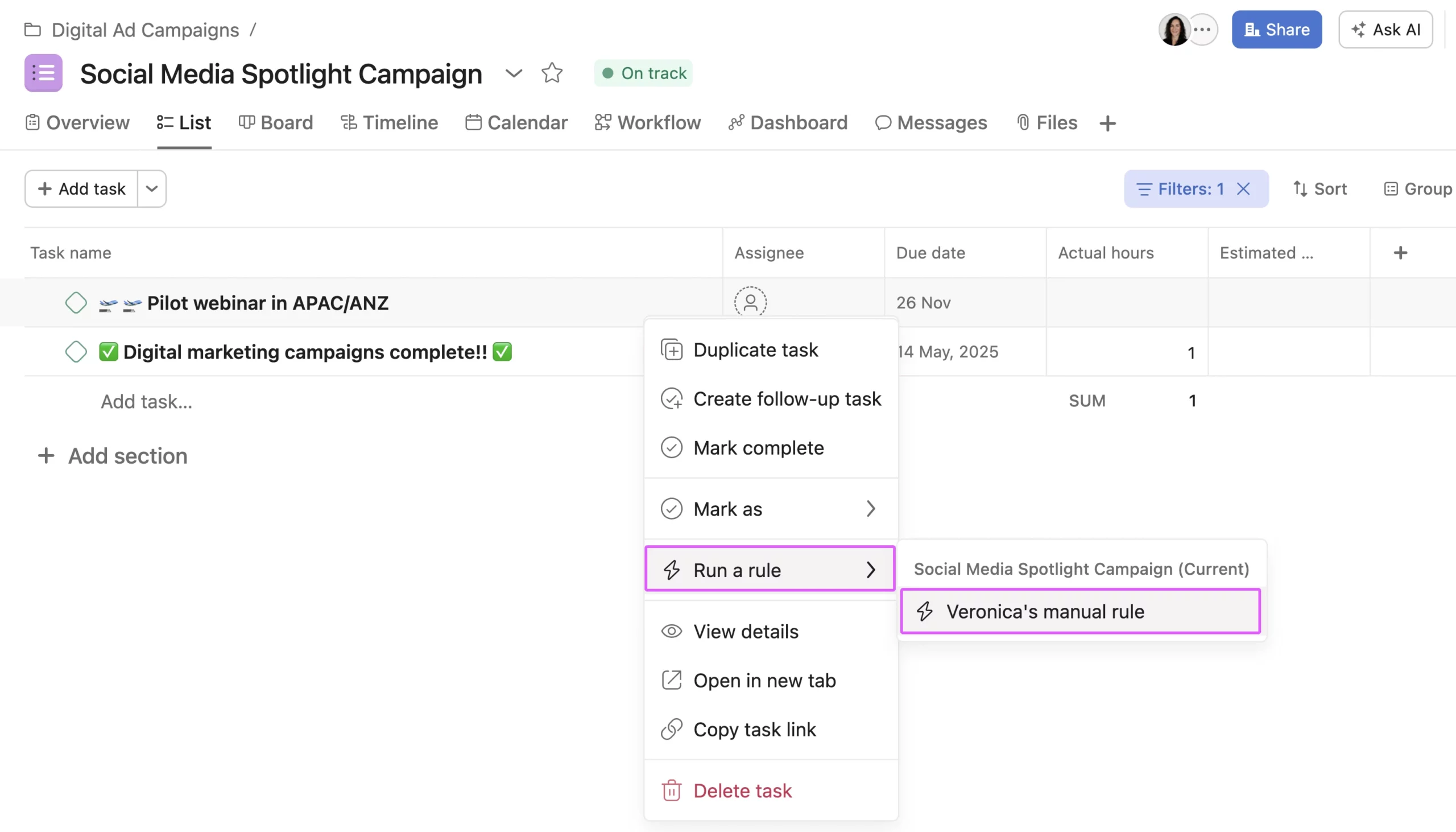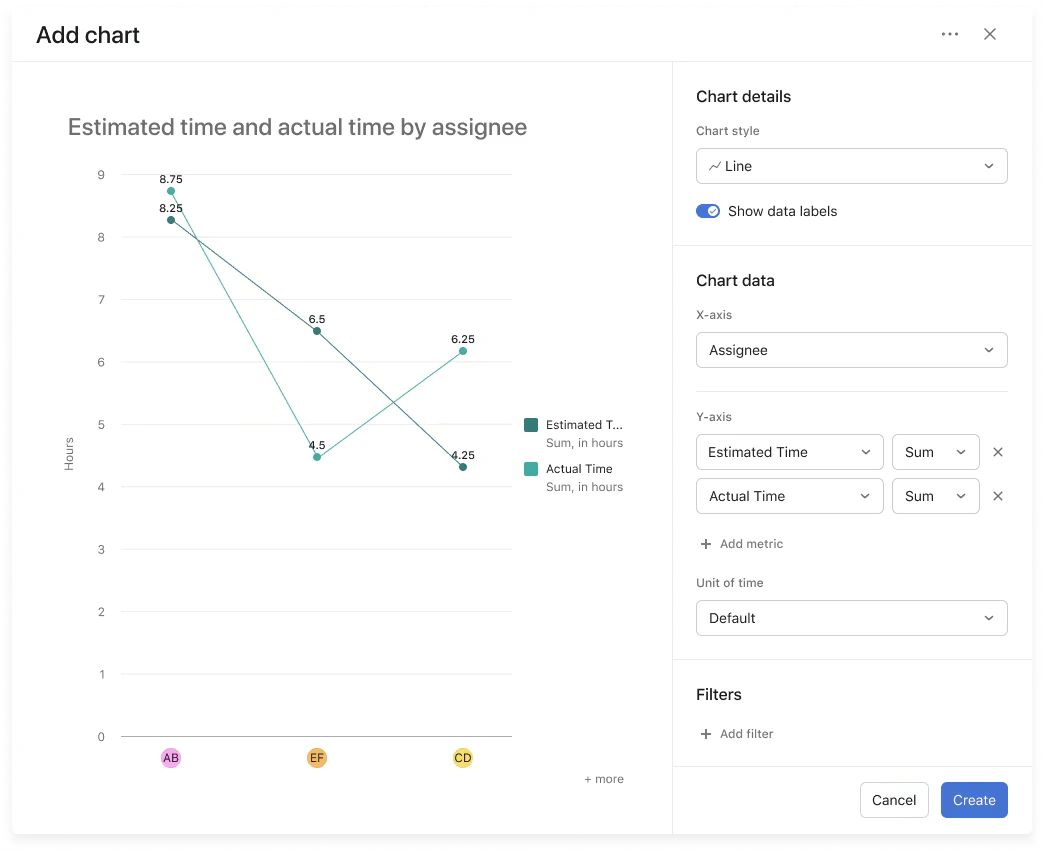July Brings a Fresh Breeze to Asana: Smarter AI, Seamless Integrations & Better Mobile Experiences
July’s updates bring powerful new AI capabilities, improved collaboration through Jira and Microsoft 365 integrations, and a host of enhancements in automation, security, and mobile usability. Whether you’re working solo, in a team, or across an enterprise, these updates help you work smarter, streamline processes, and stay in control.
Licensing Model: Transition from Team to User-Based Licenses in Mixed Domains
Asana is transitioning from team-based to user-based licensing in mixed organizations (“mixed domains”). This means you’ll now only pay for actively licensed individuals—no more double billing when multiple teams collaborate across your organization. When a paid user shares access with someone from a free team, or a free team member is added to a paid team, that person automatically receives a user license. This ensures a smooth experience even across plan boundaries, simplifying license management and encouraging flexible collaboration.
iOS View Switcher: Fast Navigation Across Inbox, My Tasks & Projects
The latest update to the Asana iOS app introduces a new view switcher that lets you easily toggle between Inbox, My Tasks, and Project views—with filtering and sorting options built into each view. This helps you find tasks and messages faster, and stay organized while working from your phone. Asana also syncs in real time with the web version, so your tasks and conversations are always up to date—no matter which device you use. This streamlined navigation saves time and supports more focused work on the go.
Personalized Mobile Onboarding: A Smarter Start for Every Workflow
The first time you launch the Asana app on iOS or Android, you’ll be guided through a tailored onboarding experience based on your role, team type, and use case. This ensures you’re instantly connected with relevant features, templates, and tips—whether you work in marketing, IT, or project management. You’ll get exactly what fits your working style, helping you get oriented faster and making the app useful from day one.
Team Sharing for Custom Fields: Less Manual Work, More Control
You can now share custom fields with entire teams—no need to add users individually. As a field admin, you can grant team-wide access in just a few clicks, ensuring consistent usage of critical data fields across your organization. This update supports secure, standardized workflows and significantly reduces the risk of errors or inconsistent data handling, especially in large-scale teams.
 Smart Chat in Microsoft 365 Copilot: Project Insights Embedded in Your Workflow
Smart Chat in Microsoft 365 Copilot: Project Insights Embedded in Your Workflow
Thanks to the new integration with Microsoft 365 Copilot, you can now use Asana Smart Chat directly within your familiar Office environment—without switching apps. Ask about a project’s status, identify blockers, or display tasks with risks, and receive instant answers right in Word, Outlook, or Teams. With AI support, you not only gain project insights but also receive proactive recommendations on what to prioritize and which next steps to take. This means faster reactions, more focused work, and full team visibility—without breaking your flow.
AI-Powered Project Selection: Automatically Assign Tasks to the Right Project
Asana now uses AI to help determine which project a newly created task belongs to—automatically, via rules. You define the context, and Asana analyzes the task to choose the right project based on content, mentions, or historical patterns. This reduces manual decisions, speeds up workflows, and ensures that every task ends up where it truly belongs. Ideal for teams juggling multiple parallel projects or complex automations.
Dropdowns for Custom Fields in Advanced Search: Better Context at a Glance
You can now display additional custom fields in the dropdown results of advanced search—without needing to set filters first. See key information like status, priority, or owner immediately alongside your results. This saves clicks, improves visibility, and makes searching much more efficient—especially in large, complex projects with many custom fields.
Jira Updates
Select Jira Cloud Site: More Flexibility Without Workarounds
When setting up your Jira integration, you can now choose which Jira Cloud site to sync with—no need to manually uninstall apps in Jira beforehand. This makes integration faster and more flexible, especially for teams working across multiple environments or client instances.
Take Over Jira Syncs: Keep Workflows Running During Team Changes
If the original owner of a Jira sync leaves your company, project admins and collaborators can now easily delete and reconfigure the connection—without needing access from the previous owner. This ensures that essential integrations remain intact and that cross-functional workflows continue uninterrupted. Perfect for scalable Jira-Asana collaboration.
Comment Sync with Jira Cloud: Smoother Collaboration Across Teams
With the new automatic comment sync between Asana and Jira Software Cloud, all team members stay aligned across tools. Comments added to a task in Asana now appear in the linked Jira issue—and vice versa. This eliminates duplicate communication, ensures all relevant information is shared, and supports seamless collaboration between product, development, and project teams.
Asana Task Updates
Improved Workflow for Custom Task Types: Simpler, Clearer, More Visual
Asana has redesigned the creation process for custom task types, making it faster and more intuitive. Instead of a complex menu, you now use a streamlined modal window to define your task type step by step. You can choose from simplified color options and, for the first time, add progress icons to visually differentiate task types. This creates a cleaner, more customized workspace—perfectly tailored to your specific use case.

Smarter Task Creation Automation: Intelligent Fields, Less Manual Work
With the latest update, you can now use dynamic values and AI-powered logic when creating tasks automatically. Instead of manually filling in every field, you can, for example, auto-populate the project name, creation date, or even generate a task description using AI. This enhancement accelerates your workflows and ensures new tasks are created fully and accurately—right from the start, with no need for follow-up edits.
Manual Triggers for Portfolio Rules: More Control Over Strategic Workflows
You can now manually trigger portfolio rules in Asana whenever needed. This gives you full control over portfolio automations—whether you’re prompting status updates, re-evaluating workflows, or initiating manual review processes. It’s a powerful way to add flexibility to organization-wide projects without relying on time- or condition-based triggers. Perfect for strategic portfolios with key decision points or review milestones.
 AI Studio: Get Started Faster with Guided Onboarding
AI Studio: Get Started Faster with Guided Onboarding
Getting started with Asana’s AI Studio is now easier than ever. A new interactive onboarding experience walks you through key features step by step—from creating your first rule to using AI-powered automations. Whether you’re new to Asana or trying out AI Studio for the first time, the guided walkthrough helps you become productive immediately and support your team more efficiently. It’s the perfect foundation for building smart, automated workflows in no time.
AI Studio Plus: AI Automation for Individuals and Small Teams
Asana’s new AI Studio Plus plan is designed for individuals and small teams looking to boost productivity with AI-powered workflows. Easily automate repetitive tasks like sorting, renaming, or prioritizing—without complex setup or the need for an Enterprise subscription. The monthly plan gives you full access to powerful AI rules, making it easier to work smarter and integrate automation into your daily routine. Ideal for saving time and scaling your personal productivity.
Multiple Filters in Timeline View: Analyze Project Schedules More Precisely
You can now apply multiple filters simultaneously in Timeline view when grouping by “No sort” or “Assignee.” This allows you to create more targeted project views—for example, showing only high-priority tasks with a specific status and within a defined time frame. This helps you analyze complex timelines more effectively, detect bottlenecks early, and stay focused on the most important tasks—without switching between views.
Multi-Metric Charts: Compare Up to Four Metrics at Once
Asana’s new multi-metric charts let you visualize up to four numeric or time-based metrics in a single chart. Track workload, cycle time, budget consumption, and task progress—all in one comprehensive view. This enables you to quickly spot patterns, better understand trends, and make more informed, data-driven decisions directly within your project or portfolio reporting.
 Improved Portfolio Timeline: Better Visibility, Faster Access
Improved Portfolio Timeline: Better Visibility, Faster Access
The updated Portfolio Timeline delivers two major improvements: First, a new right-hand panel gives you instant access to project details—such as status, owners, and due dates—without leaving the timeline view. Just click on a project to get all the key information at a glance. Second, Asana now supports the timeline view for portfolios containing nested portfolios. This makes it easier to manage complex, multi-layered initiatives and keep track of timelines and dependencies across all levels. Ideal for strategic planning at the enterprise level.
Favorite Bundles: Quick Access to Your Most-Used Workflows
You can now mark your most-used bundles in Asana as favorites. With one click, you can access your go-to templates and automations without having to search. If you frequently work with the same processes, this saves time and improves clarity in your setup. Perfect for teams that rely on structured workflows and want to reuse them efficiently.
Public Reporting API: Custom BI Integrations Without Performance Burden
Asana’s new public Reporting API allows you to build custom integrations with your preferred business intelligence tools—no need to manage your own infrastructure or exports. Access project-level data and embed it into dashboards, reports, or external analytics platforms like Tableau, Looker, or Power BI. The API is performance-optimized with built-in load balancing, enabling real-time data access without compromising system speed. Ideal for data-driven teams looking to power tailored reporting and analytics.
View-Only Licenses Now Available During Trial
During your Asana Enterprise or Enterprise+ trial, you can now assign view-only licenses. This gives stakeholders and executives access to key projects and portfolios in read-only mode—without consuming full licenses. It’s a great way to include decision-makers early on and test reporting features before finalizing your licensing strategy. Perfect for improving transparency while keeping license usage efficient.
Activity-Based Session Timeout: Stronger Security With Auto Logout
Asana now supports activity-based session expiration to better protect your organization from unauthorized access. You can configure how long a session stays active before automatically logging the user out due to inactivity. This feature ensures abandoned sessions don’t remain open, helping meet security and compliance requirements—especially in regulated environments. It’s a smart way to strengthen access control without negatively affecting the user experience.
With the July updates, Asana once again sets new standards for modern collaboration. Try out the new features and take your workflows to the next level.Want to explore previous Asana Release Notes. You’ll find helpful summaries in the NetFlows Blog.
For more details and in-depth explanations, visit Asana Help Center.
